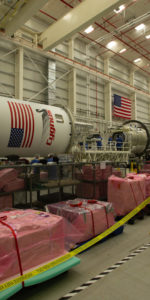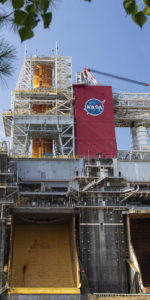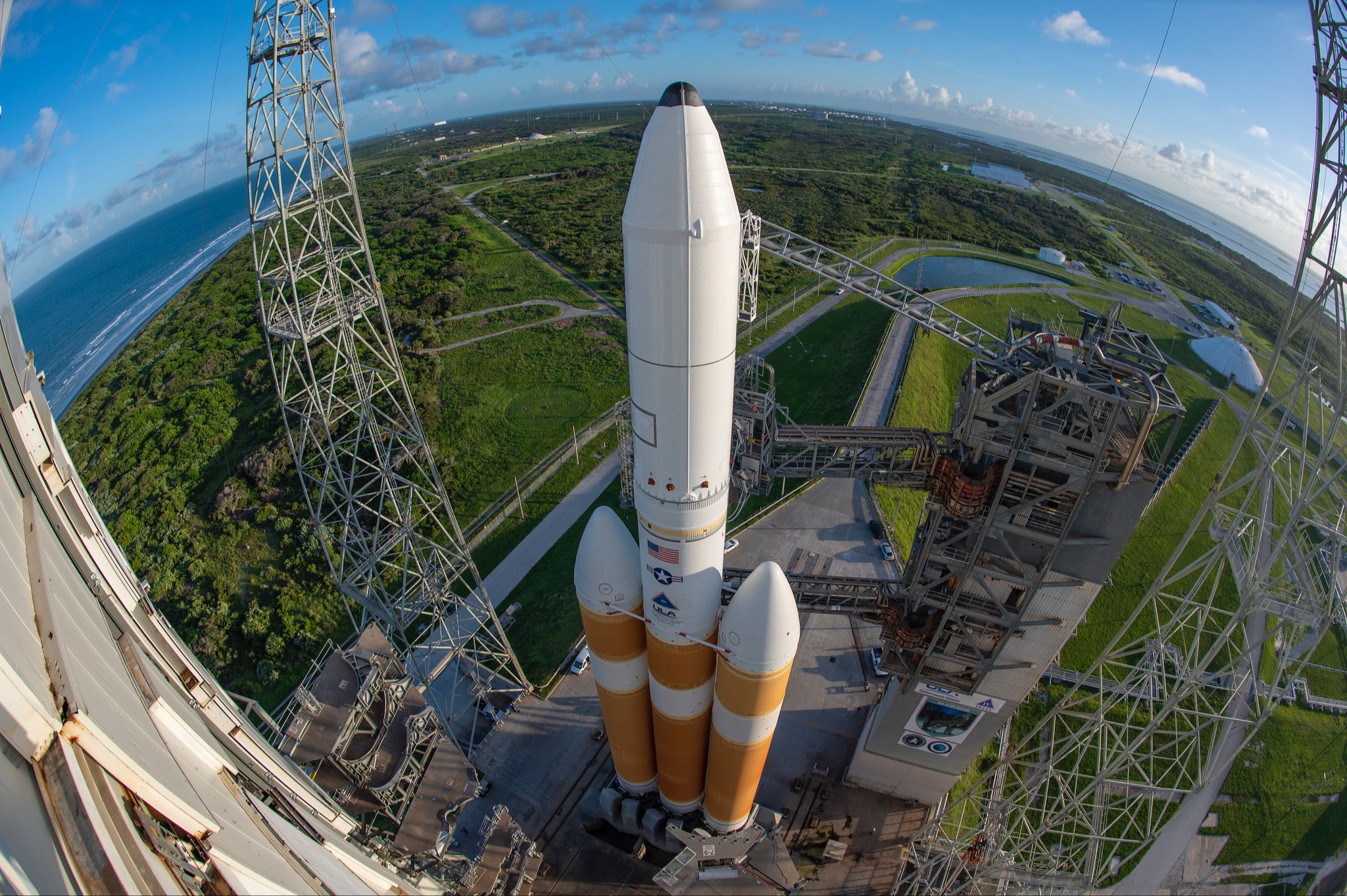
More than ten months since it was rolled out to Space Launch Complex (SLC)-37B at Cape Canaveral Air Force Station, Fla., United Launch Alliance’s (ULA) beleaguered Delta IV Heavy must wait at least another day for its next attempt to deliver NROL-44 to orbit, a highly secretive payload on behalf of the National Reconnaissance Office. Early Friday, ULA announced a 24-hour postponement from Saturday at 12:14 a.m. EDT to Sunday at 12:10 a.m. EDT.
This latest delay—the Heavy’s fourth in less than a month—is reportedly due to “an issue with the swing-arm retraction system”. But from a weather standpoint, the slip might actually improve the chances of at last getting this snakebitten mission off the ground.
According to the 45th Weather Squadron at Patrick Air Force Base in its Thursday update, the outlook for Saturday’s opening launch attempt had deteriorated slightly from an initial 70-percent-favorable to about 60-percent-favorable, thanks to cloud cover induced by predicted showers and thunderstorms.
However, Sunday (and also the backup day on Monday) expect to benefit from a brighter picture, with an 80-percent probability of suitable conditions at T-0. “Ample low-level moisture will linger through the weekend,” the 45th explained. “However, a building mid-level ridge will advect drier air aloft. This, combined with weak steering winds, should reduce afternoon shower and storm coverage near the immediate coast both Saturday and Sunday afternoon. As a result, the chances of weather-related violations decrease.”
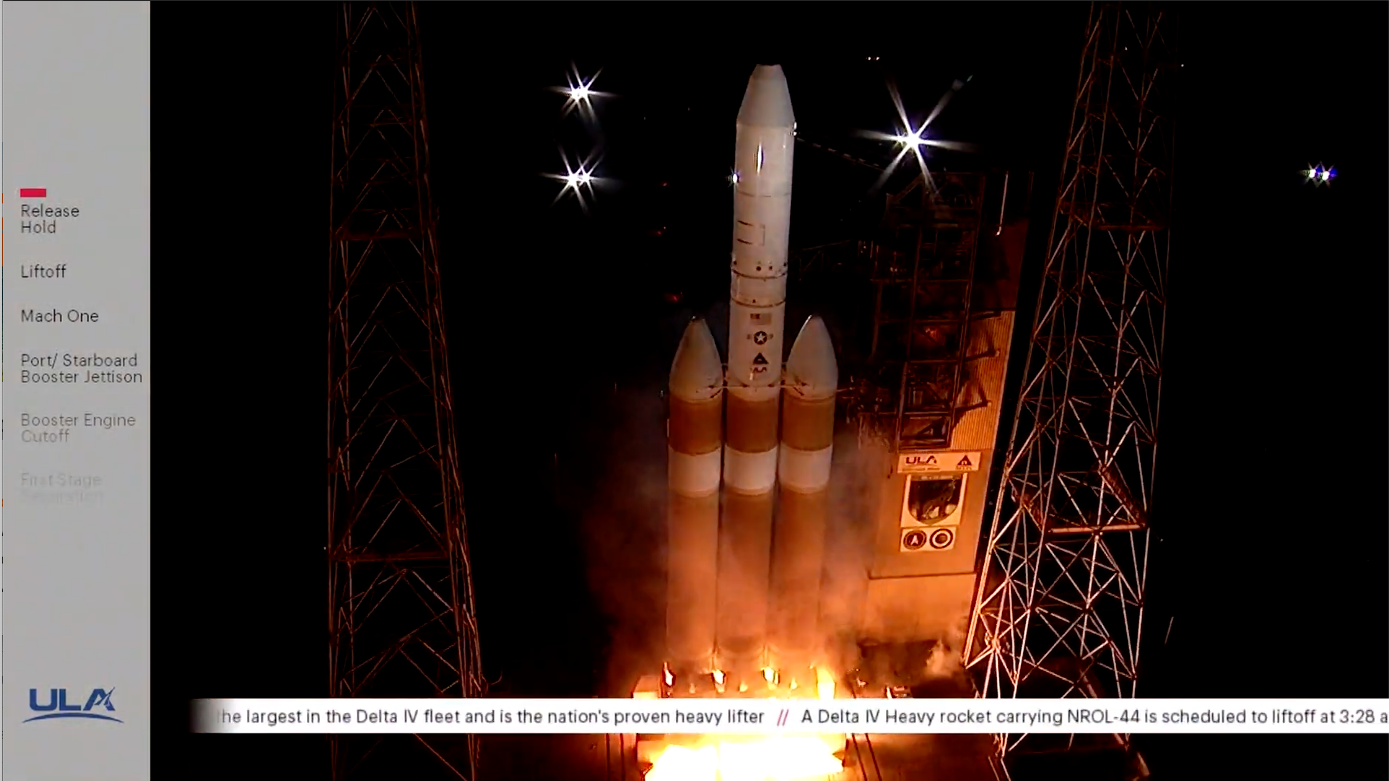
Originally scheduled to fly in June 2020, the 235-foot-tall (72-meter) Delta IV Heavy—the second most powerful rocket in active operational service, anywhere in the world, after SpaceX’s Falcon Heavy—was transported to SLC-37B last November and underwent a Wet Dress Rehearsal (WDR) in January to simulate its final countdown milestones, including fueling its three massive Common Booster Cores (CBCs) with a full flight load of liquid oxygen and hydrogen propellants.
Its launch was postponed from June to 26 August, for reasons which remain unclear, before its “customer”, the National Reconnaissance Office (NRO), requested an additional delay to the 27th. That attempt was scrubbed due to a ground pneumatics control system issue which required attention.
Another try on the 29th was aborted by the Terminal Count Sequencer Rack (TCSR) at T-3 seconds, after the starboard-side CBC had roared to life, but conditions were not met for the start-up of the center core. This necessitated a lengthy standing-down, as all three regulators on the CBCs were replaced and retested.
Eventually, ULA announced that it was targeting 26 September to fly the mission and on Thursday the Launch Readiness Review (LRR) was conducted. Led by ULA Launch Director Lou Mangieri, this critical review included leaders from ULA, the NRO and the U.S. Space Force and took place in the Delta Operations Center. The review produced a unanimous “Go” and its participants subsequently signed the Launch Readiness Certificate.
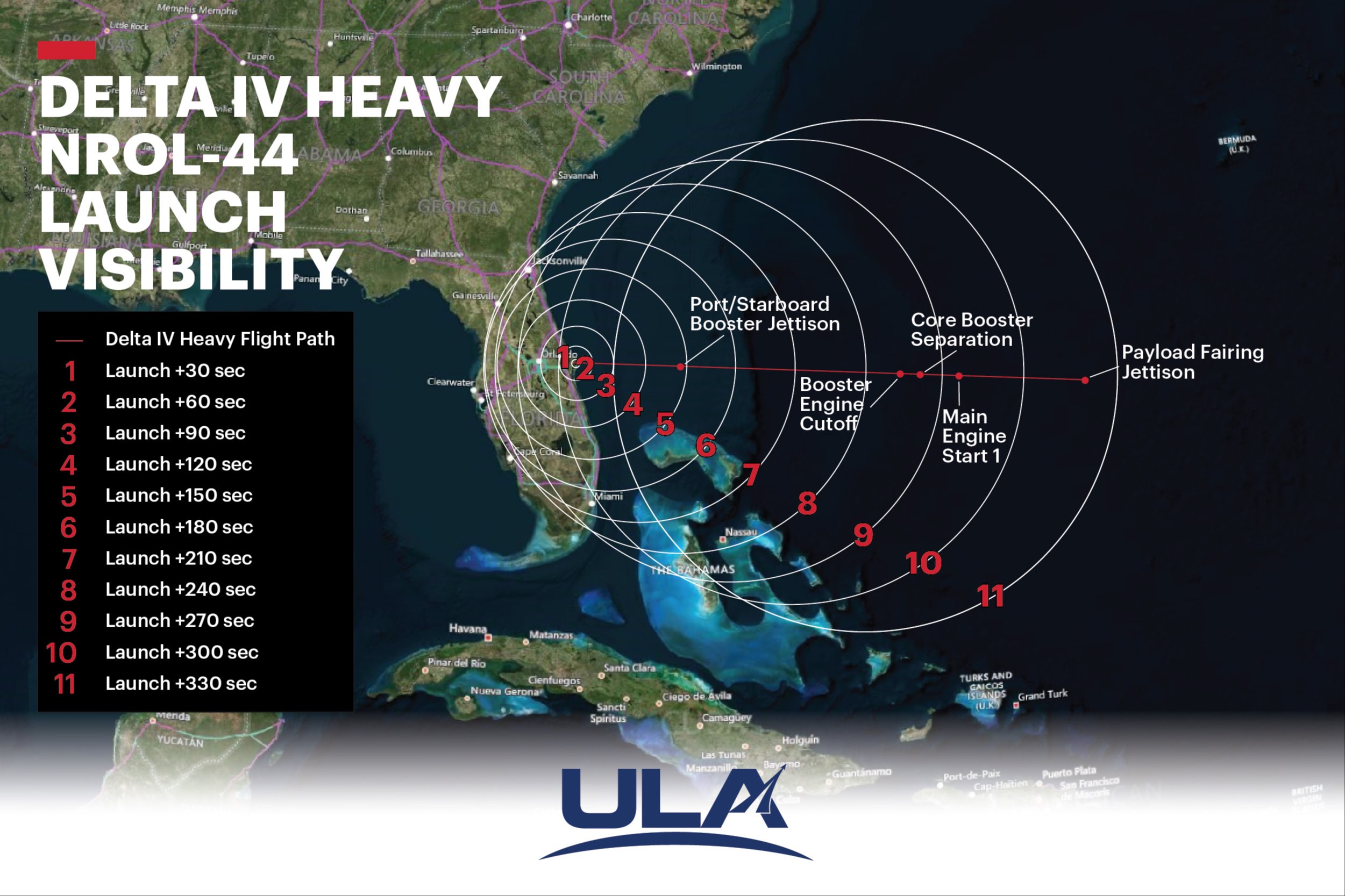
With today’s announced delay, the “rollback” of the 300-foot-tall (100-meter) Mobile Service Tower (MST) on its rail-tracks from the Delta IV Heavy should now take place late on Saturday afternoon. Moving at a glacial pace of a quarter-mile-per-hour (0.4 km/h), the MST rollback should take about an hour, before it halts and is declared “hard-down” in its launch position.
ULA CEO Tory Bruno previously advised AmericaSpace that this comparatively late MST rollback—only a few short hours before liftoff—is being done as part of efforts to best protect the Delta IV Heavy.
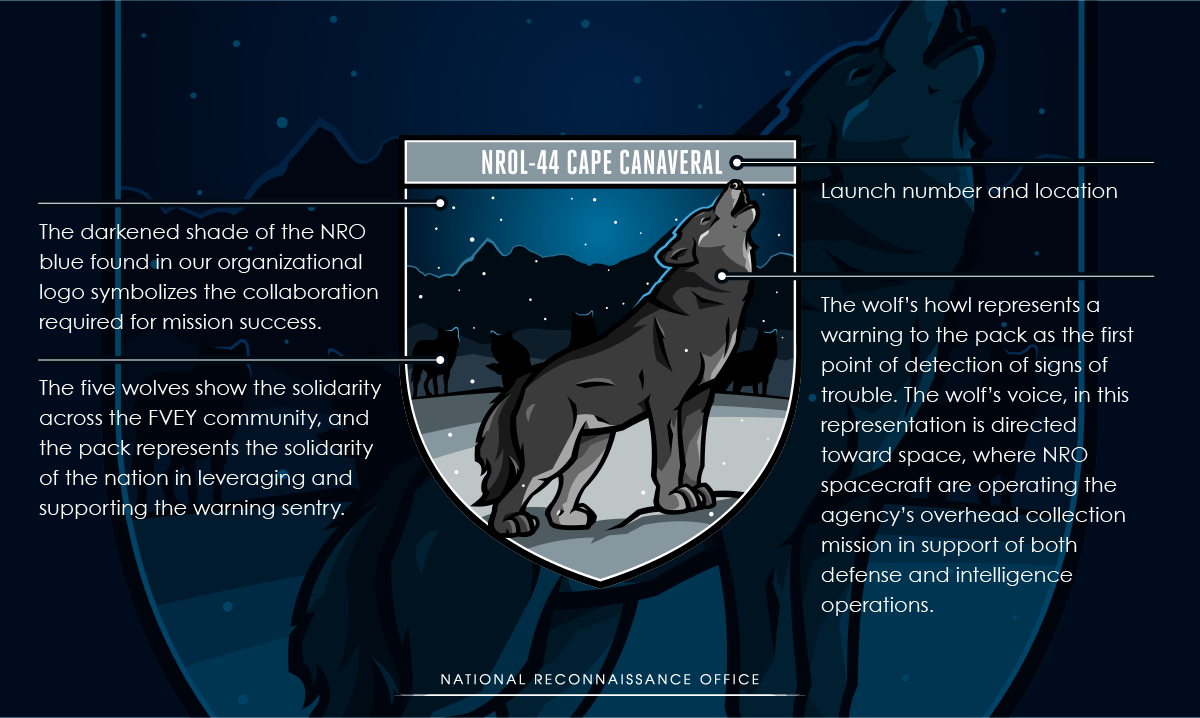
And the payload for the upcoming mission remains shrouded in secrecy, bearing only the designator of “NROL-44”. It has been suggested that it might be an Advanced Orion/Mentor signals-intelligence satellite, bound for geostationary orbit at an altitude of 22,600 miles (35,900 km) above the planet. These satellites may weigh as much as 11,500 pounds (5,200 kg).
“The Northrop Grumman satellite has a Harris mesh antenna spanning about 330 feet (100 meters),” AmericaSpace explained in our June 2016 report on NROL-37, thought to be the most recent instance of an Advanced Orion/Mentor launch. “The overall spacecraft was substantially upgraded starting in 2009 with the NROL-26 flight carrying the first Advanced Orion/Mentor.” The supreme lifting capabilities of the Delta IV Heavy is also believed to afford these huge satellites additional “maneuvering, life-extending and eavesdropping intelligence capabilities”.
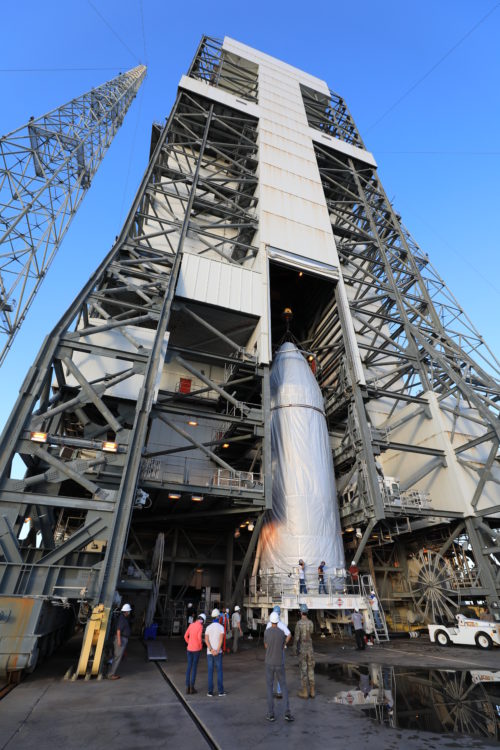
The month-long delay of NROL-44 from August to the end of September has squeezed ULA’s remaining missions together into the final quarter of 2020. Out on Space Launch Complex (SLC)-6 at Vandenberg Air Force Base, Calif., a near-identical Delta IV Heavy is being readied for the highly secretive NROL-82 mission later this year. As is customary before NRO launches, a WDR is planned, although an exact timeline has not been released, with ULA citing the classified nature of the mission.
In the meantime, at the Cape’s SLC-41, an Atlas V—flying the first three Northrop Grumman Corp.-built GEM-63 solid-fueled rocket motors—has concluded its Launch Vehicle On Stand (LVOS) milestone and is primed for its own launch later this fall. And two other Atlas V missions are targeted to follow out of SLC-41 before year’s end. If all fly as planned, that should bring ULA’s total for 2020 up to nine launches. That is almost double the number accomplished last year and will be the highest annual flight rate for ULA since 2016.




